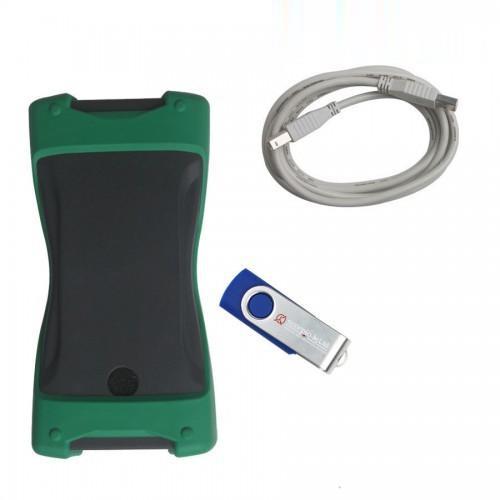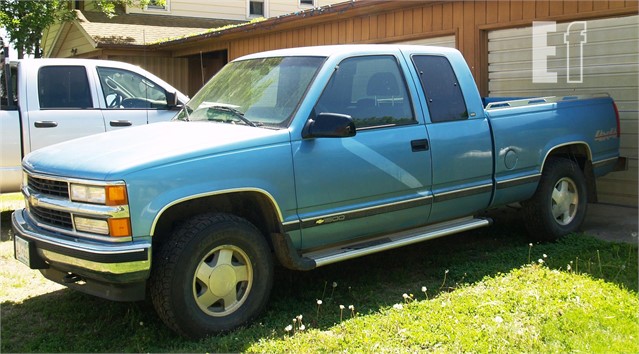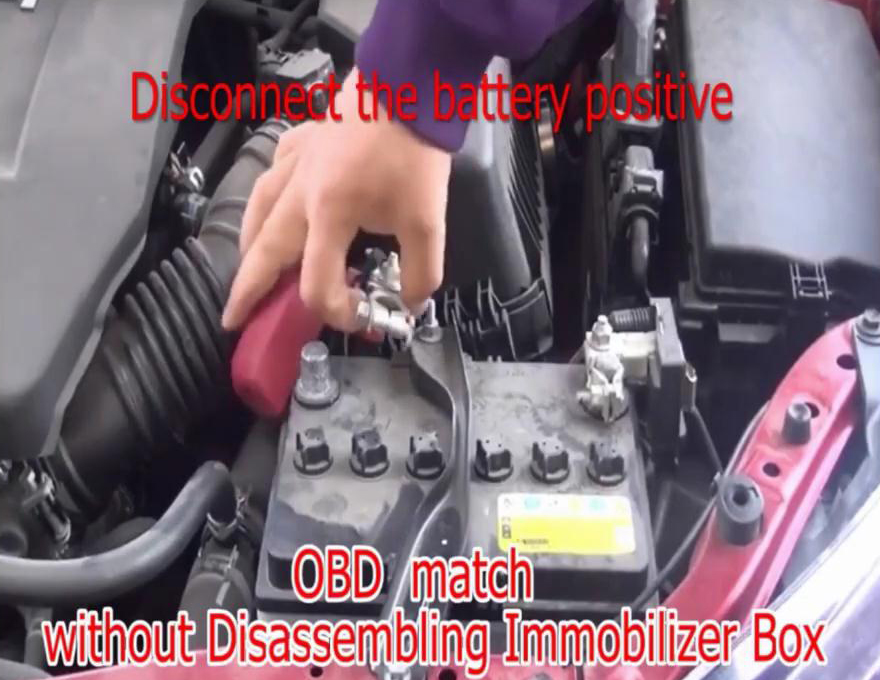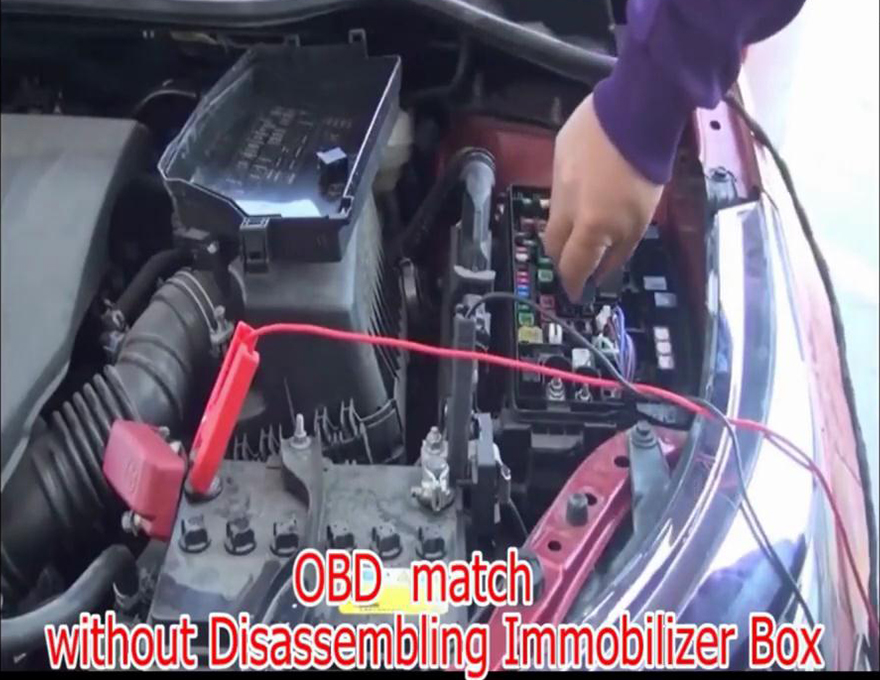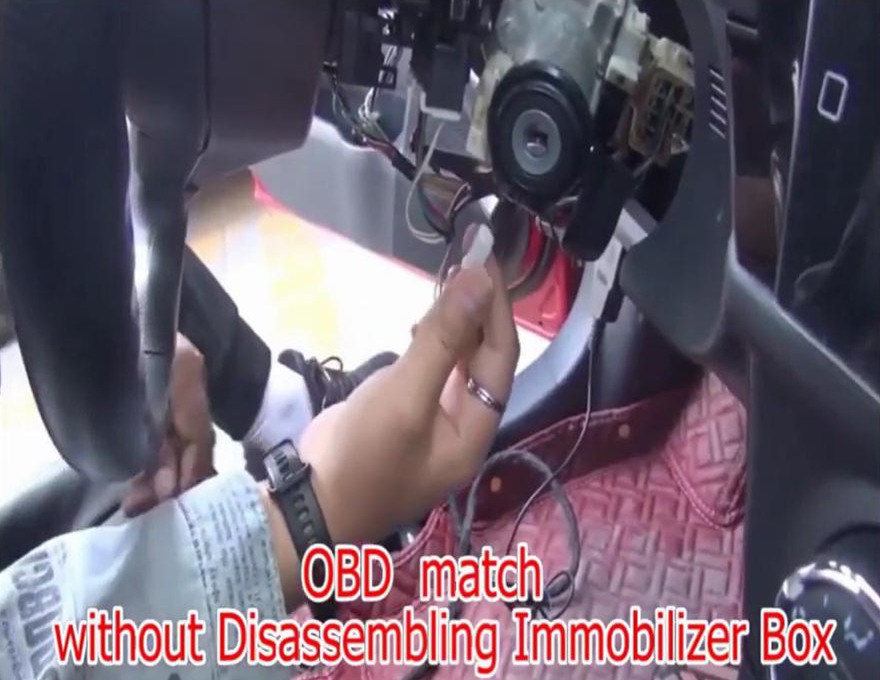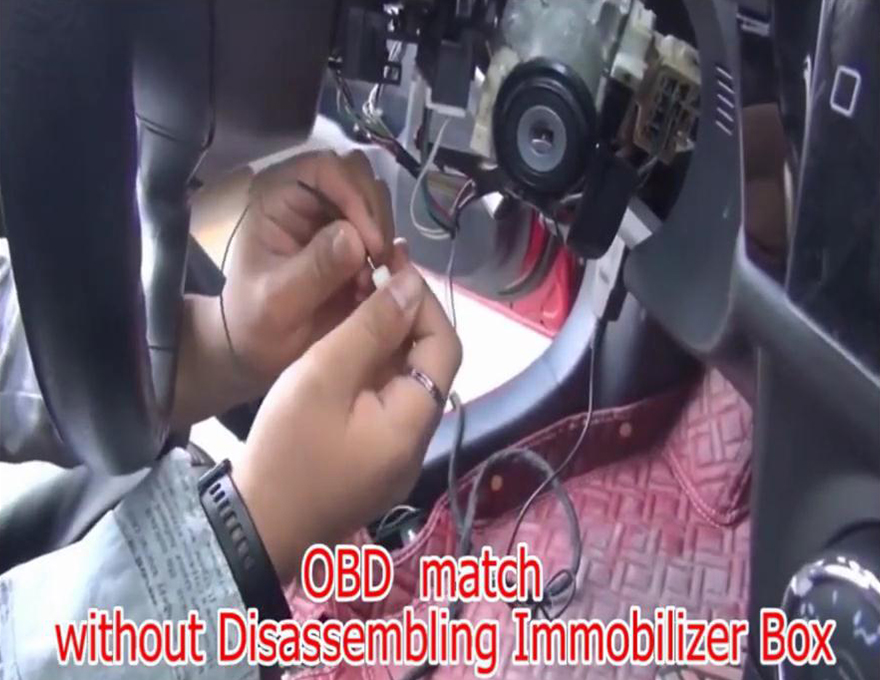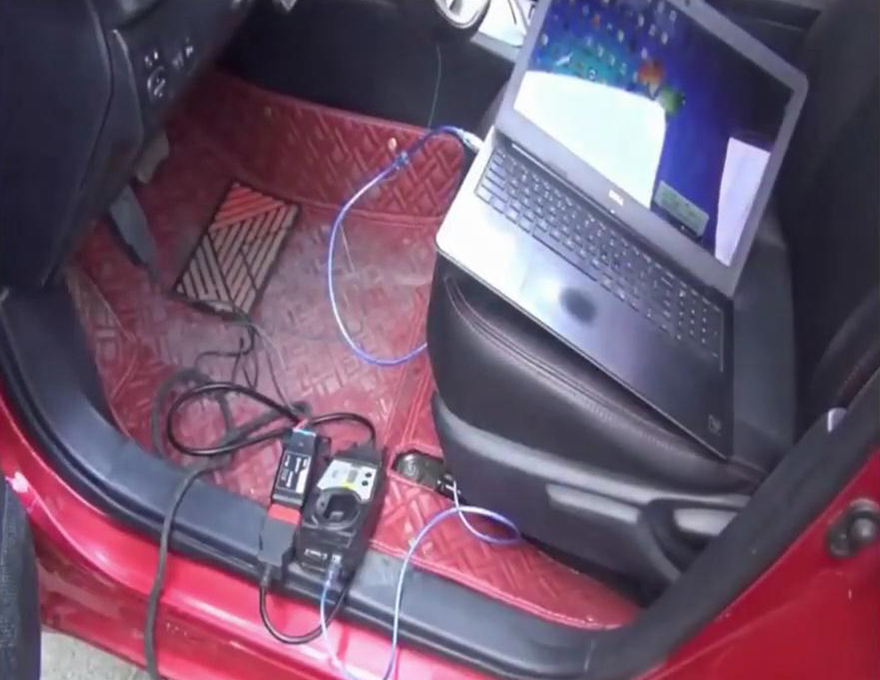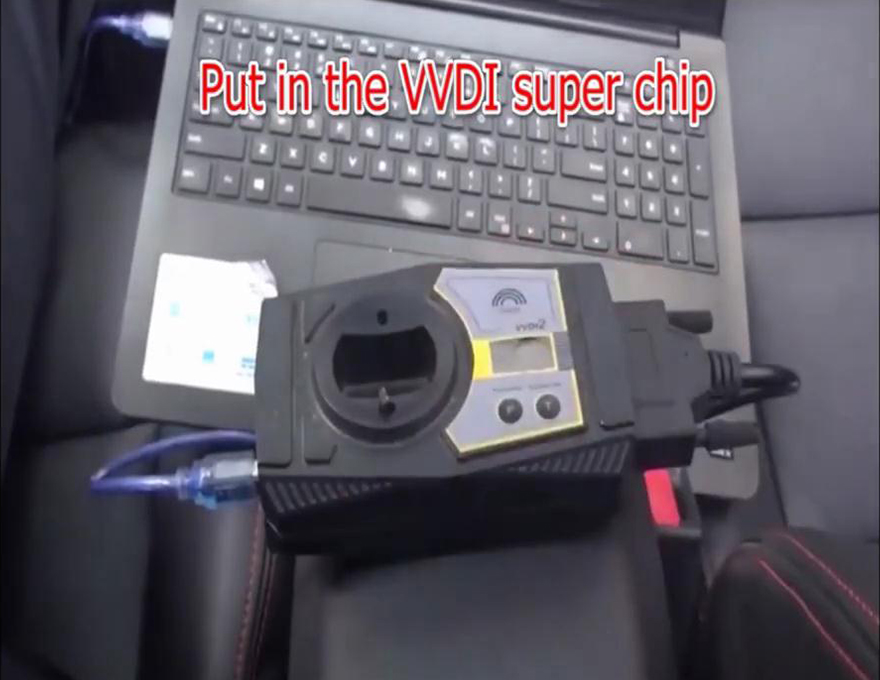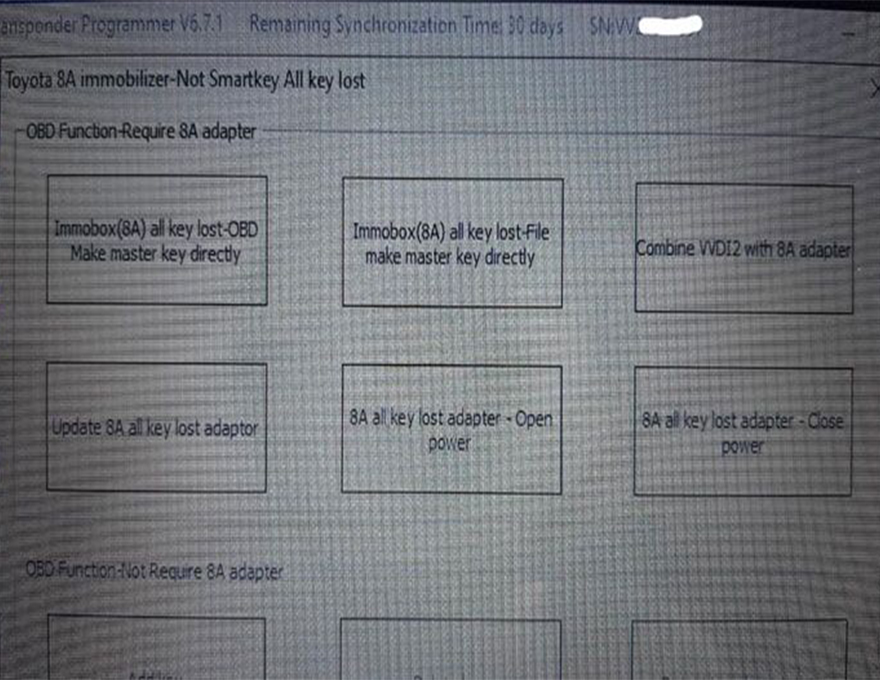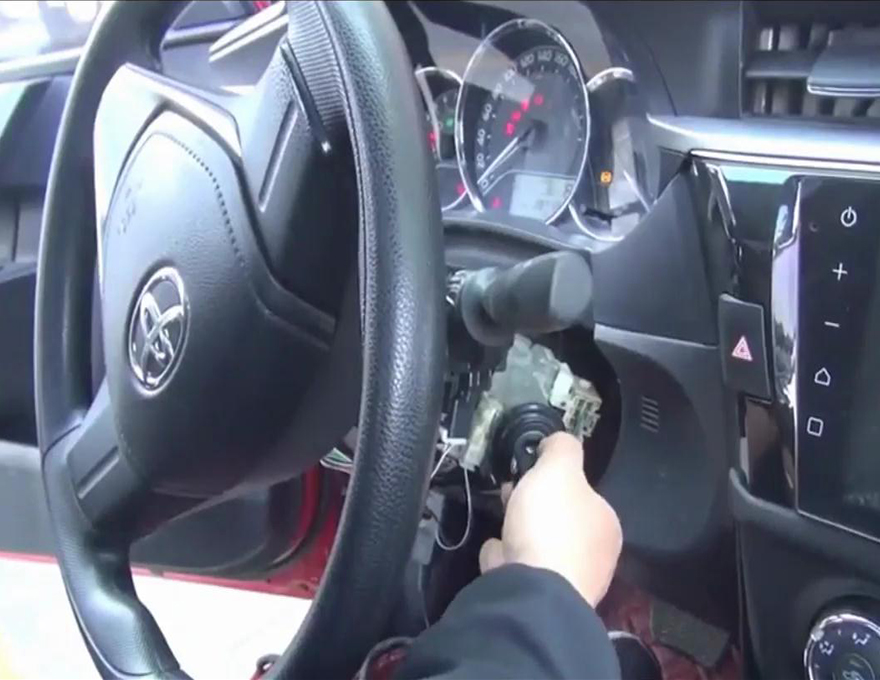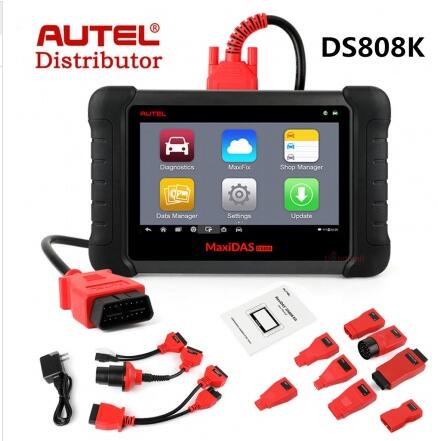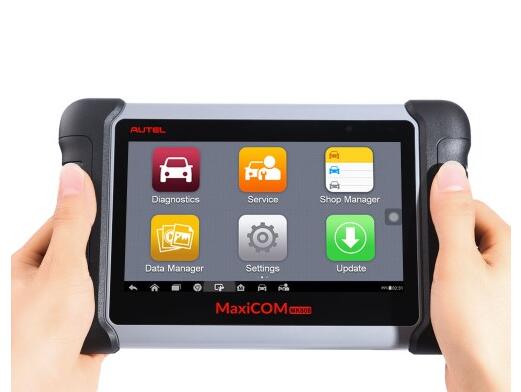Car diagnostic tools information by obd2tool
Welcome to my blog,here some auto diagnostic tools will be displayed. If you want to know more information,you can visit our official website: www.obd2tool.com.Car diagnostic tools information by obd2tool
Welcome to my blog,here some auto diagnostic tools will be displayed. If you want to know more information,you can visit our official website: www.obd2tool.com.Original Scorpio-LK Tango Excellent Transponder Key Programmer
Do you know transponder keys are more secure than traditional ignition keys? Why does car transponder key replacement cost so much? How can I get a copy of a transponder key at much lower price than car dealerships charge? Read this on and you’ll find more.
Transponder devices use microchips, which are programmed by the manufacturer with a unique serial number. When the key is inserted, the signal is sent to the receiver located near the ignition. If the digital S/N in the transponder matches the one programmed in the car, it will start when you turns the key. If the car doesn’t detect the key’s microchip or the correct serial number, then it won’t start. So a transponder key’s digital ID is virtually unique, which is why makes it more secure than traditional ignition key, which only has a few standard cut combination.
But microchips are quite expensive, and getting a key with a microchip copied costs much more than traditional re-keying. What’s more, car dealerships usually charge more than you expect for a new transponder key.
You can ask locksmiths for help. They have the same equipment as car dealerships to program new transponder keys. Or you can just settle this by yourself, with this small and amazing Original Scorpio-LK Tango Transponder Key Programmer, specially designed for transponder key programming.
Tango Programmer, created by Scorpio-LK, founded over twenty years and focusing on transponder keys creation and functions that are useful for locksmiths worldwide, and has become one of the most widely used and recognizable RFID transponder key programmer which is developed to cover, read, write and generate the latest transponders used in the latest vehicle immobilizer technologies.
Original Tango Key Programmer Highlights:
1. 100% Original Scorpio-LK Tango
2. Supports Daihatsu G Chip Function ( Need to pay)
3. Latest Version: V1.116
4. Free update online: Connect your TANGO to a computer with internet,
start the software to [help]>>[check update], then you can update
Tango to the latest software.
5. Operating system: Win98, WinXP, Vista, Win8, Win8/8.1, Win10
6. With Free TANGO OBD Cable
Tango Software V1.116 Feature:
Again First in the World!
TangoPlus for Subaru V1.0
True Emulation via OBD of all SmartKeys
The only right conception to solve the “All Keys Lost” problem
Key maker Toyota H-Immo (All Keys Lost), based on Barracuda Image
Dump: added cars Toyota Aygo, Citrone C1, Peugeot 108
Key maker Mercedes Benz Actros 2015 – (95128, M13)
Added Auto Update framework for supplementary files
Some bugs fixed
You can check the features of other software versions via:
https://www.chinacardiags.com/wholesale/tango-key-programmer-with-basic-software-tango-transponder-programmer-fast-shipping-197.html
Tango Key Programmer Supported Transponders List:
Philips transponders:
PCF7930-31 writing, reading
PCF7935 writing, reading, shadow memory, crypto calculator
PCF7936 writing, reading, modes password, crypto, Manchester & Biphase encodings
PCF7941 transponder, remote, eeprom, Manchester & Biphase encodings
PCF7942 transponder, remote, eeprom, Manchester & Biphase encodings
PCF7943 transponder, remote, Manchester & Biphase encodings
PCF7944 transponder, remote, eeprom, Manchester & Biphase encodings
PCF7945 transponder, remote, eeprom, Manchester & Biphase encodings
PCF7946 transponder, remote, Manchester & Biphase encodings
PCF7947 transponder, remote, eeprom, Manchester & Biphase encodings
PCF7952 transponder, remote, eeprom, Manchester & Biphase encodings
PCF7961 transponder, remote, Manchester & Biphase encodings
*Auto switching between PCF7936-PCF7961 windows if invalid type detected.
*Autodetect manchester / biphase
Temic transponders:
Temic 11 reading , writing to T5
Temic 12 reading , writing to T5
Megamos transponders:
Megamos (13) reading , writing to T5 , emulating on PCF7930-35
Megamos (48) reading, writing, PIN, unlock by PIN, full range of memory contents, crypto calculation
Megamos CRYPTO-2 (8E) read ID, read/write EEPROM, write Cryptokey
Texas transponders:
Tiris (4C) reading
Tiris (4D) DST crypto reading, writing, crypto calculator
Tiris (4E) DST crypto reading, writing, crypto calculator
Tiris (8C) reading
Atmel transponders:
TK5551M (T5 replacement)
SAAB reading , writing to T5
Kindly reminder: Tango programmer is in working out stages, therefore the list of the supported transponders will be developed in the future. Let’s wait and see what happens!
97 Chevrolet 3.1 Lumina loss of power solved with GM Tech2
Car model and year: 1997 Chevrolet 3.1 Lumina with 90K.
Issue:
A bit of a very slow coolant loss, and the pump was found leaking. Replacing that, about a month ago, it started having a loss of power between 20-40 mph. I took the car and found misfire codes on cylinders 2, 4, 5, and 6. I cleaned the MAS, replaced the spark plugs and wires, checked all the coil-packs with a spark tester (they checked out with strong spark), and checked the fuel pressure at the fuel tube that feeds the injectors.
With that done and the problem persisting (especially when the car warmed up to operating temp), I had Cottman transmission (very reputable guys at this local shop) and they checked it out and found the same engine codes, but stated the transmission was working fine.
What I did:
I took it for a test drive and here’s what she did:
1) Starting it, it had a slightly rough idle but moved easily at low speeds.
2) Upon pulling out of the neighborhood and onto a State road that
headed uphill, I pressed the accelerator about 1/2 way as typical.
Initially it accelerated as expected, but after about 30 yards it
started to run at a lower speed and engine rev as if I reduced the pedal
to about 1/4.
3) When the car reached the crest of the hill, even though I didn’t
alter the pedal position, it began accelerating to a more expected 1/2
pedal acceleration.
4) The above was typical on all uphill slopes… oh, and when I got out with it running, I could smell un-burnt gas.
5) Noting the engine service light was on, I had the code pulled and
received the following: PO301 “cylinder misfire detected – cylinder
number 1”
6) I pulled the #1 wire (wires and plugs are new) and did a spark test,
it was sparking strong and quickly at a separation of 36-38.
I’m going to pull the plug and check it for damage, but that is an extremely remote issue. I don’t even understand why 1 cylinder misfire would cause the acceleration issue that she has, it just doesn’t add up. Previously, before the heads were pulled, the misfire codes were intermittent misfire in cylinders 2, 4, 5, and 6.
When I last had the code pulled, it was PO300.
Chevrolet OBD2 code reader to use:
Foxwell NT301 code scanner
March 10th, 2020 update:
Here’s an example of one of the “printable” moments that the Foxwell recorded, there are well over 50 pages:
Calculated Load Value(%)14.9
Engine Coolant Temperature(?C)93
Short Term Fuel Trim -Bank 1(%)-6.3
Long Term Fuel Trim – Bank 1(%)-2.3
Intake Manifold Absolute Pressure(kPa)71.0
Engine RPM(rpm) 1893
Vehicle Speed Sensor(km/h)20
Ignition Timing Advanece for #1 Cylinder(?)-1.5 Intake Air Temperature(?C)51
Air Flow Rate from Mass Air Flow Sensor(g/s)36.42 Absolute Throttle Position(%)43.9
Location of Oxygen SensorsB1S12–B2S—-
Oxygen Sensor Output Voltage Bank 1-Sensor 1(V)0.045 Short Term Fuel Trim Bank 1-Sensor 1(%)-3.9
Oxygen Sensor Output Voltage Bank 1-Sensor 2(V)0.105 Short Term Fuel Trim Bank 1-Sensor 2(%)N/A
OBD requirements to which vehicle is designedOBDII
March 11th, 2020 update:
Just test drove her again and got the error code:
PO102
Mass of Volume Air Flow A
Circuit Low
I replaced the MAF a few days ago. So I remeoved the new plastic one
and replaced it with the original aluminum one (that’s clean as a
whistle) and there was no change in the error code. Plus, I then tested
it with my multi-meter, here are the results:
1) With the harness disconnected and the engine/ignition off:
All three wires (red, black and yellow) ohm-ed out as ground.
2) With the key in the ignition and it turned to run position without the engine on:
The power wire (red) had almost 13 volts, the ground (black) wire was grounded, and the signal wire had about 6 volts.
3) With the engine running and the harness attached:
I tested the Hertz with my TEST BENCH set to 20 Hertz and the signal
wire (yellow) had a fairly consistent 2.14 hertz at idle (engine warm)
and when the engine revved it smoothly went to just above 14 hertz and
then evenly went back down to 2.14 when the idle was slowly released.
March 11th, 2020 update:
To add to my complex testing, I ran the car with my Foxwell attached and the Foxwell has a (g/s) reading for the MAF during the events in real time. It seems it was registering 4-5 during idle and was at the 40-50 range when it was bogging down, but when it cleared and accelerated as expected, it was well into the high 60s and into the 70s. Is this something that assists? Both the original GM MAF and the new replacement AC Delco MAF are performing the exact same way.
March 16th, 2020 update:
I found the yellow sensor wire that goes from the MAF sensor to the PCM wasn’t clean when I used my Ohm meter, it showed about 1.71. I ran a new wire along the same route and spliced it into the existing connectors. The new test drive was markedly better in acceleration and speed. However, after clearing the code, it still showed “”PO102, Mass of Volume Air Flow A, Circuit Low.”
I grabbed an older laptop in great condition with XP on it, so I could run the GM program to flash the PCM, I’m loading XP Professional on it with Service Pack 3 so it should run it properly, and I’ll “flash” the junkyard PCM first to my daughter’s VIN and see if that fixes the issue.
March 19th, 2020 update:
Finished (though I had to go to a shop with a GM Tech 2 and basically rent it with the mechanic).
Everything is factory spec, and it idles and revs without issue. No trouble codes. Everything is within spec. when we looked over all the info in his GM Scanner Tech 2 readings.
When driving (though markedly better and gets up to highway speed great), still it seems the engine, as it is accelerating: feels that it either adjusts the fuel/spark a bit, or the transmission shifts prematurely into a higher gear or something (that’s the only way I can describe it). It’s weird to feel the car do something without driver input. Whatever it is is keeps the car from continuing its acceleration for a few seconds. If I give it throttle during the event, it downshifts and accelerates great through the issue. If I don’t alter the accelerator, and keep it steady during the event, it waits a few seconds and then shifts to overdrive and feels normal.
Since I changed the fluid and filter when I first was alerted of the issue by my daughter during my maintenance work, and the old fluid was discolored (aged) and there was no metal dust or filings on the magnet, I’m wondering if I just need to allow her to drive it and change the fluid again in a few days and see if it flushes more of the old fluid that was trapped inside the torque converter?
March 27th, 2020 update:
PROBLEM SOLVED
So my friend has some awesome equipment to test Hz and other sensor
feedback and we looked at the Knock Sensor and the O2 Sensors (much more
sensitive than mine as well as had the exact ranges of signal that
should be expected). The Knock Sensor and the O2 Sensors both looked
slightly out of spec, enough to do a test drive with first the Knock
Sensor disconnected and then a drive with both the Knock Sensor as well
as the upstream O2 Sensor disconnected.
With the Knock Sensor disconnected the drag or delay in acceleration under load was gone, though it wasn’t completely smooth. With both disconnected, it drove really well and there was no drag or delay or alteration of power during driving. I replaced both the Knock Sensor as well as the upstream O2 Sensor and tested the car again. It drives as it should.
So, in the end, the car had these issues:
1) the #1 cylinder had a head gasket leak, fixed with head gaskets replaced
2) the MAF sensor was sending inaccurate info and had a damaged wire, replaced
3) the vacuum Transmission Modulator was broken, replaced
4) the upstream O2 Sensor was not within spec, replaced
5) the Knock Sensor was sending wildly inaccurate info, replaced
Interestingly, only item #2 above was determined by the PCM to be in error and would throw a Service Engine Soon light or throw a code, the PCM was silent on the other errors. I guess a ’97 GM PCM was not very sophisticated.
Toyota 8A H chip all keys lost program with Xhorse VVDI2
When Toyota 8A H chip all keys lost and need to program new keys without disassembling Immobilizer Box, Xhorse VVDI2 + Xhorse toyota 8A adapter, this job will be easily done.
Procedure:
Immobilizer Box off-line match

OBD match: without disassembling immobilizer box.
1). Disconnect the battery positive.
2) Locate the #2 ignition switch relay position and unplug the relay at the same time.
3). Plug the device into the obd2 port of the Toyota car.
4). Look at how VVDI2, Cable Vvdi Toyota 8A and the computer connect.
Click on “Check Toyota 8A adapter”, then “8A IMMO box all keys lost – directly generate the main key”.
Read data
upload data
computer data.
The device completes automatically.
When the device prompts the completion of the operation, we also need to restore the vehicle and then start the vehicle for testing.
Done.
Free Download VXDIAG GM GDS2 Database 2020.02
VXDIAG VCX NANO and multi tool GM GDS2 Software database released to 2020.02.
Free Download GM GDS2 2020.02 Software & Database
https://mega.nz/#F!jN4lSYaA!5Q_p4sZEySxLu6HVPP418A
File including
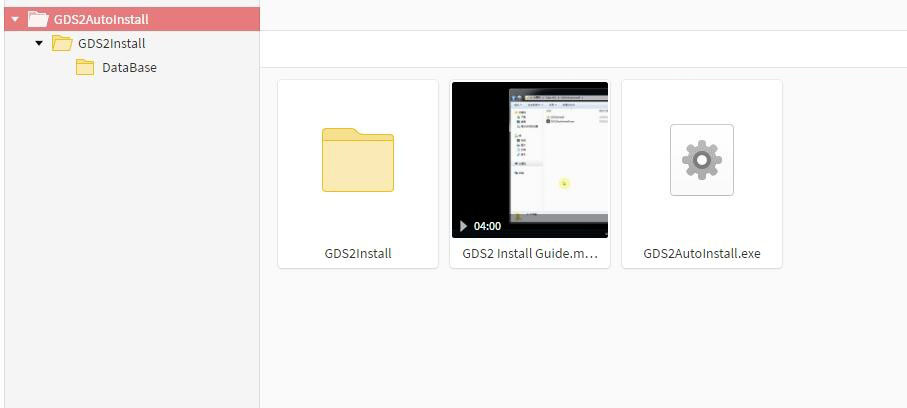
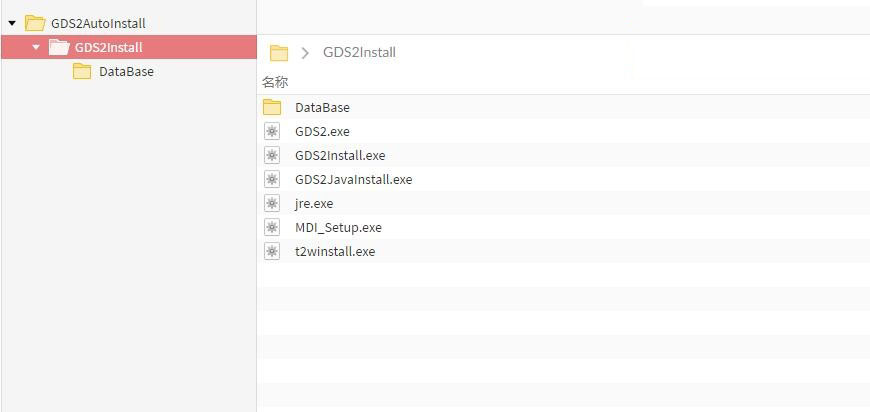
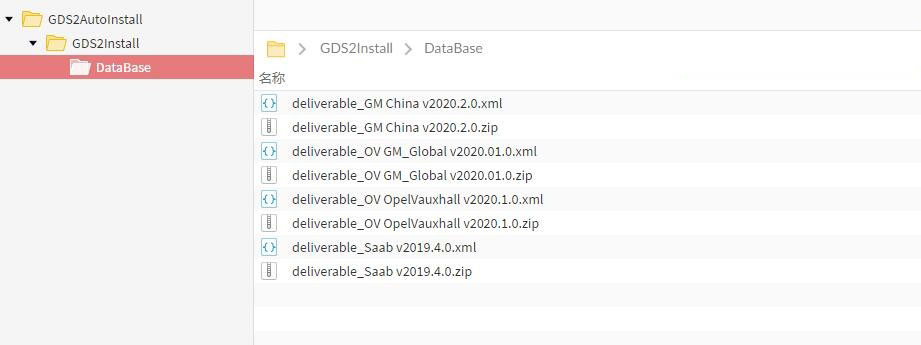
Autel MaxiCOM MK808 vs. Autel MaxiDAS DS808

Many people ask us, what’s the difference between Autel MaxiCOM MK808 and Autel MaxiDAS DS808 diagnostic systems? Which one is the best? Which one we should buy? Scroll down for details:
Autel MK808 vs DS808
Autel MK808 & DS808 detailed Review
Autel MaxiDas DS808
The Maxidas DS808 is a slightly difference. It focuses on working with engine and ECU diagnostics more extensively. In other words, it’s designed to diagnose engine problems instead of turning off the airbag light. This is the best tool to see what’s going on inside an engine.
FEATURES
Like the MK808, this scan system comes with a tablet and an OBD2 cable. The tablet has a large, clear screen, 32 GB of on-board storage, and a powerful processor that can easily read and interpret scan data.
The DS808 has full support for all vehicle electronics. It’ll work with fault codes, view live data, and even view manufacturer-specific engine sensor data. It can view what the ECU is doing and sensor output,too.
Furthermore, the software of DS808 has plenty of extra features for professionals. You can easily view old data and manage customer information.
PROS:
* Unrivaled OE-level diagnostics for ultimate engine analysis
* Read and clear basic engine codes and perform deep diagnostic scans
* View sensor data in real time
* The roomy touchscreen makes viewing data easy
* Fast processor ensures scans execute quickly
* The professional software works with virtually all makes and has advanced business features
CONS:
* Doesn’t clear manufacturer specific codes (like airbags, ABS, etc)
* Have to charge the tablet
WHO SHOULD BUY IT?
The MK808 is for automotive professionals. It’s the superior choice if you find yourself diagnosing car engines often. It’s definitely the tool of choice for people who need the deeper scans and advanced diagnostics it offers.
Autel MaxiCom MK808
FEATURES
The best part about the MK808 is its wide compatibility. In other words, it’ll work with every make and model of car and read almost any manufacturer-specific code.
To be clear, the MK808 doesn’t just work with basic OBD2 codes. It also can read more advanced manufacturer specific codes from domestic, Asian, and European brands. This means that you can use it to perform an oil reset or read DPF/TPMS/IMMO/EPB/SAS codes.
The MK808 is a fast, modern tablet scanner. It lets you work with a big, vivid touchscreen, and lots of power processes. Moreover, it is recharged faster than a normal OBD2 scanner. This means codes come up faster and the live data display is incredibly useful.
PROS:
* A big screen and easy to use interface
* Fast processing power and memory
* Virtually unmatched compatibility
* Professional software and more extra features
CONS:
* You need to charge the tablet
* Doesn’t have the advanced engine functionality of the DS808
WHO SHOULD BUY IT?
The Autel MaxiCom MK808 is marketed towards car enthusiasts and
average vehicle owners. The incredible compatibility and ease of use
make it a top choice for anyone working with cars professionally.
RECOMMENDATION
The MK808 is compatible with every car made after 1996 and can clear tricky manufacturer trouble codes. If you want a scanner that can solve the broadest range of problems on the broadest range of cars, it’s the one to choose.
On the other hand, the Autel Scanner DS808 offers deep diagnostics that make diagnosing engine problems a breeze. If you want to view live ECU data to get to the heart of an engine issue quickly, the DS808 is the right choice.

